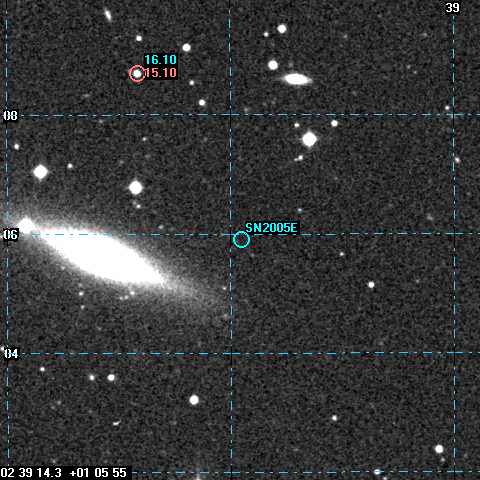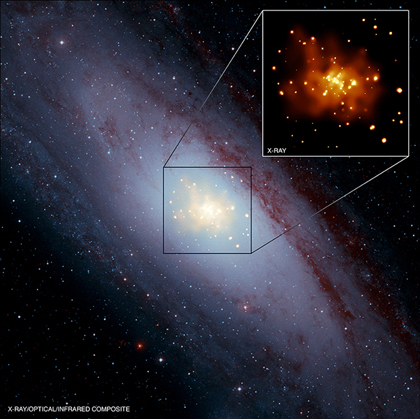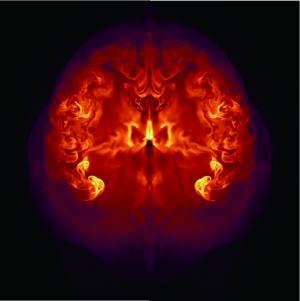http://www.universetoday.com/2010/05/19/a-new-kind-of-supernova-explodes-in-unusual-way/#more-64655 wrote:
A New Kind of Supernova Explodes in Unusual Way
Written by Nancy Atkinson May 19th, 2010
SN 2005E, from a DSS image via Astrosurf.com.

<<Not all supernovae are created equal, astronomers are finding. A faint supernovae found by international teams of scientists is like nothing previously seen, and cannot be explained by conventional insights into these exploding stars. Until now, only two basic kinds of supernovae had been observed. But now there appears to be a third.
"The supernova explosion is the most energetic and brilliant event that happens in the universe," said Dae-Sik Moon from the University of Toronto, and part of a team publishing their findings this week in Nature. "It is rich with information, not only about how stars die, but to understanding the origin of life and the expansion of the universe. But this one is surprisingly different."
The first two types of supernova are either hot, young giants that go out in a violent display as they collapse under their own weight, or old, dense white dwarves that blow up in a thermonuclear explosion.
White dwarf stars are composed mainly of carbon and oxygen, and although the supernova, SN2005E, appears to be from a white dwarf system, it is devoid of carbon and oxygen and instead is rich in helium.
The environment of SN 2005E. The image to the left shows NGC 1032, the host galaxy of the supernova, before the supernova explosion. The discovery of the supernova SN 2005E is shown on the right. Note the remote location of the supernova (marked by the arrow) with respect to its host, about 750,000 light-years from the galaxy nucleus. Credit: Sloan Digital Sky Survey / Lick Observatory
SN2005E was first spotted on January 13, 2005 in the nearby galaxy NGC1032, and since then scientists have carried out various observations of it using different telescopes.
On the one hand, the amount of material hurled out from the supernova was too small for it to have come from an exploding giant. In addition, its location, distant from the busy hubs where new stars form, implied it was an older star that had had time to wander off from its birthplace. On the other hand, its chemical makeup didn't match that commonly seen in the second type.
"It was clear," said lead author Hagai Perets from the Weizmann Institute in Israel and the Harvard-Smithsonian Center for Astrophysics, "that we were seeing a new type of supernova."
SN 2005E had unusually high levels of the elements calcium and titanium, which are the products of a nuclear reaction involving helium, rather than carbon and oxygen.
"We've never before seen a spectrum like this one," said Paolo Mazzali of the Max-Planck Institute for Astrophysics. “Once thereceiving star has accumulated a certain amount, the helium starts to burn explosively. The unique processes producing certain chemical elements in these explosions could solve some of the puzzles related to chemical enrichment. This could, for example, be the main source of titanium.”
Computer simulations to see what kind of process could have produced such a result suggest that a pair of white dwarves are involved; one of them stealing helium from the other. When the thief star's helium load rises past a certain point, the explosion occurs.

"The donor star is probably completely destroyed in the process, but we're not quite sure about the fate of the thief star," said team member Avishay Gal-Yam. In fact, the astronomers say these relatively dim explosions might not be all that rare.
Alex Filippenko from UC Berkeley professor and colleague Dovi Poznanski, both part of the team studying SN 2005E reported last November another supernova, SN 2002bj, that they believe exploded by a similar mechanism: ignition of a helium layer on a white dwarf.
“SN 2002bj is arguably similar to SN 2005E, but has some clear observational differences as well,” Filippenko said. “It was likely a white dwarf accreting helium from a companion star, though the details of the explosion seem to have been different because the spectra and light curves differ.”
But this new type of supernova could explain some puzzling phenomena in the universe. For example, almost all the elements heavier than hydrogen and helium have been created in, and dispersed by supernovae; the new type could help explain the prevalence of calcium in both the universe and in our bodies.
It might also account for observed concentrations of particles called positrons in the center of our galaxy. Positrons are identical to electrons, but with an opposite charge, and some have hypothesized that the decay of yet unseen 'dark matter' particles may be responsible for their presence. But one of the products of the new supernova is a radioactive form of titanium that, as it decays, emits positrons.
"Dark matter may or may not exist," said Gal-Yam, "but these positrons are perhaps just as easily accounted for by the third type of supernova.">>












